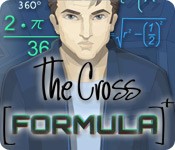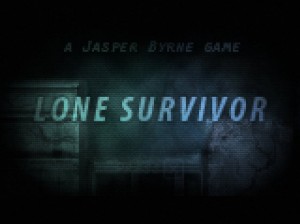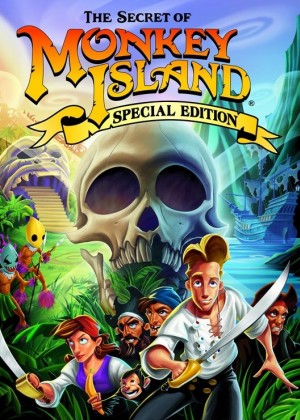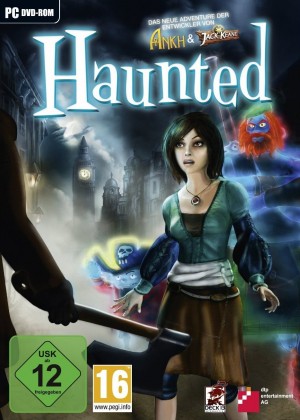The Cave archived preview - page 2
The first point Ron Gilbert wants people to know about his new game, The Cave: it is an adventure game. Not an action-adventure. Not a puzzle-platformer. An honest-to-god adventure. He and Double Fine even pitched it as one to publishers, and Sega took it on for this very reason. That’s right, people: The Cave, a new adventure game from Monkey Island creator Ron Gilbert, is on its way to PC, Xbox LIVE Arcade, and PlayStation Network.
His second point is that The Cave is something he’s been thinking about for a very long time. It predates Monkey Island and Maniac Mansion. He was noodling with The Cave even before he started working at LucasArts. And all this time, the idea hasn’t left him alone. To hear him tell it, The Cave has been hanging out in his subconscious for the last three decades, bugging him to bring it to life. Finally, thanks to a partnership with Double Fine Productions (which is, of course, headed up by Ron’s old LucasArts buddy Tim Schafer), this long-dormant game is seeing the light of day. Well… not the light of day, exactly. But early next year, we get to descend into the dark, dank, and decidedly bizarre caverns and passageways that long ago took up residence in Ron Gilbert’s mind.
The concept of a cave “speaking” to Ron Gilbert here and there for the past thirty years isn’t so surreal when you realize that this cave can talk. You may not control it as a playable character, but just as Guybrush Threepwood is the face of Monkey Island, the cave is the sentient, opinionated being at the heart of this new game. In fact, the demo I saw last week at Double Fine’s office started with the cave introducing itself (somewhat grumpily) as the camera panned down on the flock of playable characters who have been drawn to it for reasons unknown. This intro isn’t simply an amusing cameo; Ron says the cave will continue to chime in throughout the adventure, an omniscient force musing on the characters’ attempts, laughing at their failures, and occasionally lending a helpful nudge.
If a talking cave sounds kind of weird, then here’s something even weirder, at least where Ron Gilbert is concerned: the game’s protagonists don’t talk. Not a peep. Instead, Ron’s trademark humor will show itself, often in dark ways, through the situations the explorers find themselves in and the words of other, fully voiced non-playable characters they encounter deep underground. Why force his heroes to stay mum? Ron believes they’re more mysterious this way. Each has arrived at the cave in search of something very personal, and without sharing any dialogue, their motivations and eventual success can be even more puzzling and intriguing to us players who have also found ourselves compelled to explore the cave, and don’t know why.
This doesn’t mean the game lacks story. Au contraire, each character has a complete backstory that plays out via his or her personal mission inside a dedicated area of the cave. With seven playable characters and only three slots in the expedition party, this means you’ll have to play The Cave at least three times to experience all of its narrative possibilities. The seven characters you choose from include a Monk who’s seeking his master, an Adventurer searching for her two lost partners, a Hillbilly looking for love, a Scientist on the verge of a great discovery, a pair of Twins who want parents who will love them, a Knight who needs an all-powerful sword, and a Time Traveler who must right a wrong a million years in the making. Adding to the mystery, the game gives no explanation of the characters’ strengths or goals before you’re faced with the choice of which three to pick; you’ll figure out why they’re here and what you’re supposed to do with them as you go along.

With mute main characters, The Cave obviously lacks dialogue puzzles. It does have its fair share of inventory puzzles, but the inventory is quite basic, with each of your three protagonists only able to carry one item at a time. If this all sounds very simple compared to Ron’s past work, well, it is. On purpose. He’s still wholeheartedly devoted to the adventure genre, but Ron is also eager to solve some of the problems he has with adventure games. Take walking, for example. Crossing from one room to another—let alone descending a massive underground cave—has the potential to be tedious. In The Cave, Ron has tried to address this by making the very act of moving from Point A to Point B fun. (Sacrilege!) This means that characters run instead of walk, and sometimes objects or topography will get in their way. They may need to climb up on a ledge, or jump a gap, or shimmy down a rope. These activities were designed to provide enjoyable challenges—not to mention expected ones, since they’re exploring a cave and all—but these actions shouldn’t be reflex-dependent or difficult. Instead, Ron and co-designer J.P. LeBreton have tried to ensure that the true obstacles are the many puzzles waiting to be solved.
So, with no dialogue and a very small inventory, just how to do these puzzles work? They’re mainly object manipulation puzzles, which Ron considers to be a hallmark of adventure games, and they’re bolstered by the fact that the three characters in your party can (and, in many cases, must) work together to solve them. The Cave can be played alone, with one player switching between the three characters as needed, but it also supports up to three-person local multiplayer, meaning that you and one or two friends can explore the cave and solve its puzzles collaboratively. The demo included several challenges that required the type of lateral thinking adventure game fans are accustomed to. In one early example, two levers must be pulled simultaneously before a gate will open all the way. Once you’ve figured out what each of the levers do, you can dispatch two of your characters to them and send the third through the open gate. On the other side, this character can flip a switch that opens the gate permanently, freeing up his or her two partners to pass through.
In another, more complex example, a fire-breathing dragon is blocking the way you need to go. A pit full of chewed-up bones and pointy spikes stands between it and the party. By climbing the fissure above this pit, you find a claw machine (a giant version of those arcade staples that entice you to grab a stuffed animal for a handful of pocket change). This could be used to grab the dragon, if only you could find some way to lure it into the pit. A convenient vending machine provides an option, but it’s not working. Nearby you find the item you need to make it work (in this demo, that object was a bucket of water, but Ron cautioned that this was a placeholder and not the final puzzle solution). Once the vending machine springs to life, one of your characters can grab a hot dog from it and toss this into the pit. When the dragon ambles in to chow down, another character above can drop the claw to grab the dragon and pull it up out of the way. And voilà! You’ve just bypassed a fire-breathing dragon using the nonsensical yet perfectly figure-out-able logic that adventure games have been championing since the days of Colossal Cave. (Not coincidentally, Ron played that classic text adventure back in the eighties, around the time the idea for The Cave popped into his head.)
Ron says that The Cave’s puzzles are full of this type of logical, hands-on problem solving, often requiring the cooperation of two or all three playable characters to reach a solution. And he stresses that The Cave does not have any physics puzzles. (Even though Limbo is another game he cites as an influence, in his mind the very existence of physics puzzles like the ones in Limbo causes a game to cross the genre line from adventure to something else.) The console controls used to explore the cave and manipulate puzzle elements seem pretty standard: you move a stick to move the character, and press a button to switch between characters. The PC controls are still under development but Ron hopes they will be very intuitive, possibly straight point-and-click. A PC gamer himself, he does not want the PC version to feel like a console port.
Each character has special abilities, which can make a difference in how you approach a puzzle. The Knight can withstand certain dangers that would kill other characters, such as that aforementioned dragon's fiery kiss, and he can “slow fall” in areas where other characters would drop to their deaths. The Hillbilly can hold his breath for a long time underwater. So on one playthrough you might progress by having the Knight descend into an otherwise inaccessible area or by sending the Hillbilly on an extended swim past an obstacle, while next time with a different party, you’ll have to look for other solutions. These abilities may not significantly change the gameplay—Ron says they’re the icing, not the cake—but they should help with the usual adventure game pitfall of replayability, making your second experience a bit different than the first even in the common areas of the cave that all seven characters have access to.
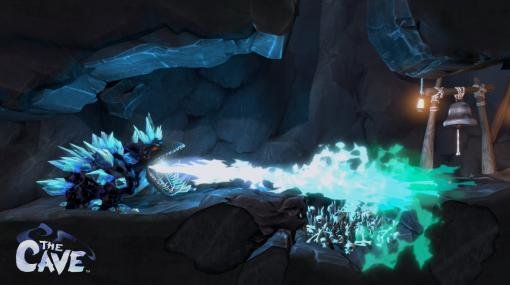
Back up a minute… what’s this about death? Yes, your characters can die in The Cave, but it’s truly painless. If you die, the sentient cave lends a hand by respawning you right next to the spot where you died. A three-second animation stands between death and a do-over. So don’t freak out; death is another of those old adventure game annoyances Ron’s determined to do away with.
On top of the variety provided by its character-specific content, the game itself is non-linear. You’ll be exploring a huge cave that the early screenshots and trailer have barely begun to hint at. Technically, it’s all one big environment that scrolls as you move through it; there's no passing between rooms, no load screens. Though it’s massive, Ron says it has been designed to limit backtracking: your characters may need to travel back and forth a bit within a self-contained area as you figure out how to progress, but as you descend deeper and deeper into the cave, you won’t need to climb back up. Items will be used fairly close to where you found them, so unlike in a punishing game like Colossal Cave or Zork, there’s no worry of losing access to something you really need. The three characters can get separated, but because of the need for puzzle-solving teamwork, they’ll never stray too far from each other. While there’s no map to help you orient yourself in the cave and see where each party member is, the camera pans deliberately when you switch between them, so you should always have a sense of where they are in relation to one another.
Though the whole game takes place inside the cave, it has many visually distinct locales—a medieval castle, an “outdoor” carnival, and a mad scientist-style laboratory, to name a few. The artwork has a lush CG cartoon look reminiscent of a Pixar movie or Shrek. The Cave uses a 3D game engine, but its environments have a 2D perspective; characters move up and down and side to side, but never toward the screen or away from it. With the exception of simple labels that appear over useable items as you approach, there is no interface to clutter up the screen. The characters are vibrantly animated, and I especially liked the visual reward of seeing a character hold his or her one allotted item as opposed to stuffing it down an invisible pocket. At one point during our demo, when Ron made the Scientist pick up a giant hot dog, she tucked it under her arm and it flopped a bit as she ran. Adorable!

Near the end of our meeting—maybe the fifth or sixth time Ron reiterated that The Cave is, in fact, an adventure game—I asked what he thought of the initial reaction to the trailer from people who took one glance and pegged it not as an adventure game, but something else. “It’s interesting, because I remember when Maniac Mansion came out, people were saying that was not an adventure game,” he answered. “It had graphics, and worse than graphics, they animated. I think a lot of the die-hard adventure game fans back then, they were okay with a text adventure that put up a pretty picture, like a storybook, but Maniac Mansion was a game where these characters all just ran around, there was no descriptive text, you were not typing stuff into a parser, you were just picking verbs off a screen. And so lot of die-hard adventure people did not consider Maniac Mansion to be an adventure game.
“I look back on that, and that’s kind of silly, considering that’s the style that everybody thinks of as an adventure game now,” he went on. “So I think people have to broaden their definition of what an adventure game is. It doesn’t have to be flat, 2D, pointing-and-clicking with the mouse, in 320x240 resolution to be an adventure game. There’s this style of puzzle solving and problem solving and narrative, all these things that make up a really great adventure game.”
All of these things, Ron promises, are lurking inside The Cave. Admittedly, I’m one who wasn’t quite sure what to make of this game based on the trailer alone, but now that I’ve seen it, I’m inexplicably drawn to it. I can’t shake the feeling that this living, breathing cave is just biding its time, waiting for me to show up and explore its mysterious depths. And after nearly thirty years of gestation, that long wait is almost over, as Double Fine and Sega plan to release The Cave in early 2013.





